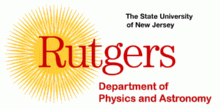
Home page of
David Vanderbilt


|
Home page of David Vanderbilt |

|
| Position: | Faculty |
| Research group: | Center for Materials Theory |
| Email address: | dhv@physics.rutgers.edu |
| Telephone: | (848) 445-9049 |
| Office: | Serin E291 |
| Mailing address: | David Vanderbilt Board of Governors Professor Department of Physics and Astronomy Rutgers, The State University of New Jersey 136 Frelinghuysen Road Piscataway, NJ 08854-8019 USA |
In recent decades, first-principles methods of computational electronic-structure theory have provided extremely powerful tools for predicting the electronic and structural properties of materials, using only the atomic numbers of the atoms and some initial guesses at their coordinates as input. My principal interests are in applying such methods to study the dielectric, ferroelectric, piezoelectric, and magnetoelectric properties of oxides. These may be simple bulk materials, or they may be superlattices or other nanostructured composites in which surface and interface effects are important. I also have an abiding interest in the development of new theoretical approaches and computational algorithms that can extend the reach and power of these first-principles methods. In particular, our group has made contributions to pseudopotential theory, the theory of electric polarization, the study of insulators in finite electric fields, the theory of Wannier functions and their applications, and the role of Berry phases and Berry curvatures in dielectric and magnetoelectric phenomena.
Berry Phases in Electronic Structure Theory:
Electric Polarization, Orbital Magnetization and Topological Insulators
 |
|
Package for generating ultrasoft pseudopotentials.
Library of ultrasoft pseudopotentials designed and optimized for use in high-throughput DFT calculations.
Package for postprocessing a set of Bloch functions to obtain a maximally localized set of Wannier functions.
Package for setting up and solving model tight-binding Hamiltonians, with a rich feature set for computing properties related to Berry phases and curvatures, written in Python for accessibility and flexibility.
The sample PythTB programs associated with my book (see above)
reside
on the CUP
website, but a copy is also posted
here.
Postprocessing tool for calculating topological invariants. The
method is based on tracking the evolution of hybrid Wannier
function centers (or Wilson loop eigenvalues) to compute
Z2 invariants, Chern numbers, etc.